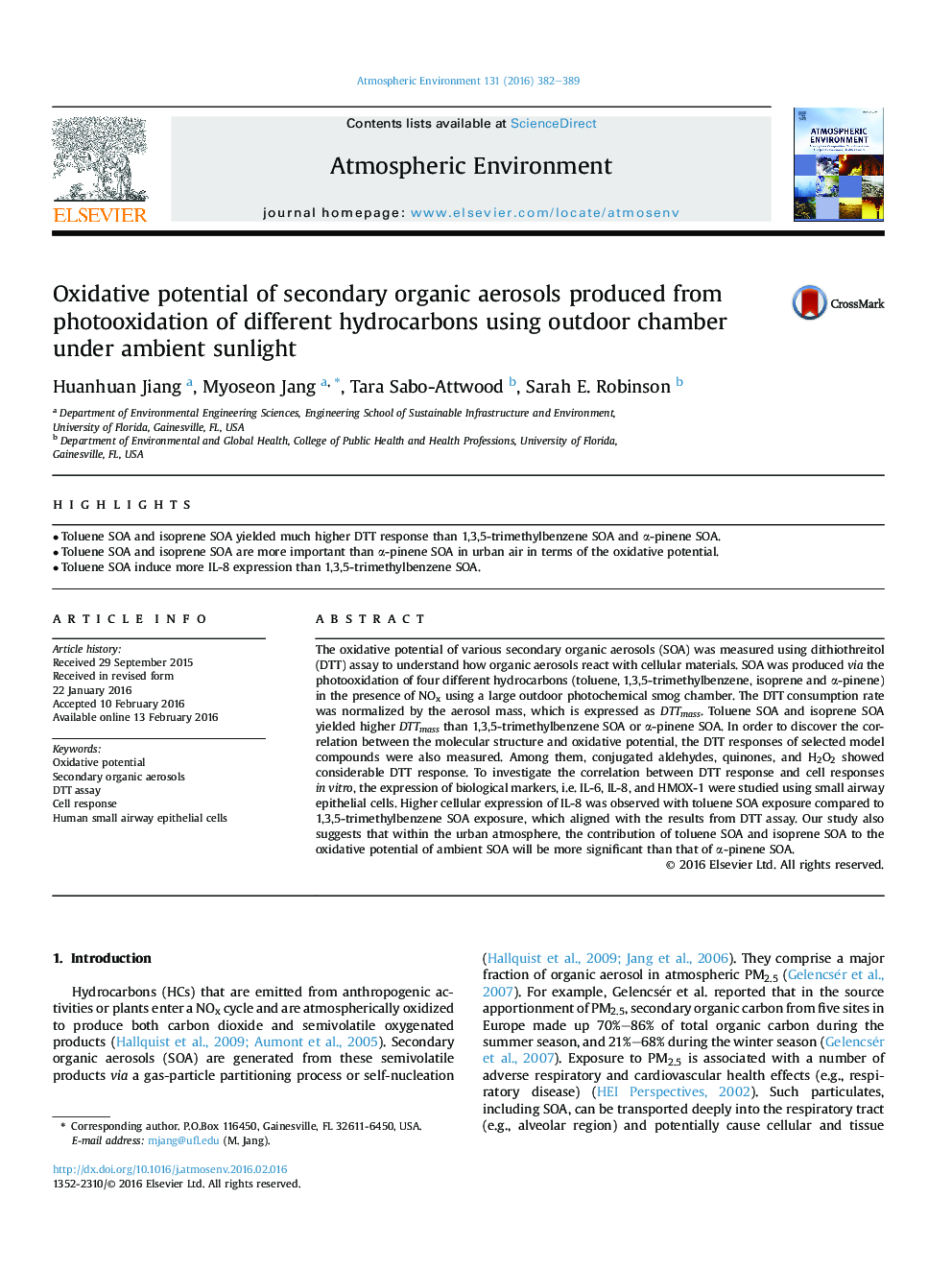| Article ID | Journal | Published Year | Pages | File Type |
|---|---|---|---|---|
| 6336499 | Atmospheric Environment | 2016 | 8 Pages |
Abstract
The oxidative potential of various secondary organic aerosols (SOA) was measured using dithiothreitol (DTT) assay to understand how organic aerosols react with cellular materials. SOA was produced via the photooxidation of four different hydrocarbons (toluene, 1,3,5-trimethylbenzene, isoprene and α-pinene) in the presence of NOx using a large outdoor photochemical smog chamber. The DTT consumption rate was normalized by the aerosol mass, which is expressed as DTTmass. Toluene SOA and isoprene SOA yielded higher DTTmass than 1,3,5-trimethylbenzene SOA or α-pinene SOA. In order to discover the correlation between the molecular structure and oxidative potential, the DTT responses of selected model compounds were also measured. Among them, conjugated aldehydes, quinones, and H2O2 showed considerable DTT response. To investigate the correlation between DTT response and cell responses in vitro, the expression of biological markers, i.e. IL-6, IL-8, and HMOX-1 were studied using small airway epithelial cells. Higher cellular expression of IL-8 was observed with toluene SOA exposure compared to 1,3,5-trimethylbenzene SOA exposure, which aligned with the results from DTT assay. Our study also suggests that within the urban atmosphere, the contribution of toluene SOA and isoprene SOA to the oxidative potential of ambient SOA will be more significant than that of α-pinene SOA.
Related Topics
Physical Sciences and Engineering
Earth and Planetary Sciences
Atmospheric Science
Authors
Huanhuan Jiang, Myoseon Jang, Tara Sabo-Attwood, Sarah E. Robinson,
